The Intangibles: A Conversation About What The Clone Wars Brought to Star Wars
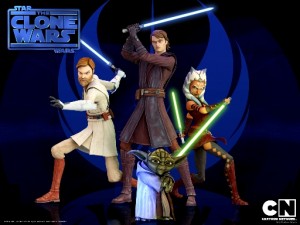 I started this post five or six times since the news of The Clone Wars’ cancellation, and I mentioned my struggles with conveying my sentiments last week in my guest appearance on the Star Wars Report podcast. I think I’ve found the right words now to express my mix of emotions.
I started this post five or six times since the news of The Clone Wars’ cancellation, and I mentioned my struggles with conveying my sentiments last week in my guest appearance on the Star Wars Report podcast. I think I’ve found the right words now to express my mix of emotions.
With my corporate background, I understand that the macro-level reasons for the cancellation may not be readily apparent to employees further down the corporate ladder. That doesn’t mean the higher-ups always make the right calls for the company – sometimes they don’t – but it’s unrealistic to expect a billion-dollar publicly traded firm like Disney to share its internal projections and market analyses with Star Wars fans, no matter how outspoken they get.
As a Star Wars blogger who has covered the television show, I’m well aware that The Clone Wars’ grand adventure hasn’t hewed to a consistent path. At times it’s showcased bold innovation and brilliant storytelling. Other times, it’s varied wildly in its style, tone, quality, and even target audience. Those weaker episodes – and there are a significant number of them – didn’t do the show any favors with much of the weekly audience or with the corporate beancounters, even as the excellent episodes truly were unparalleled in animated television.
Over the past five years, fans have seemed able to forgive the show its faults because we see the cast and crew as members of our shared Star Wars family. Disney, though, didn’t buy Lucasfilm to join a family – they did it to make an investment. Their decisions will be motivated not by sentiment, like fans, but by their best estimates for short- and long-term financial return. Emotionless economic calculus often feels cruel to those with other, more personal stakes in a situation.
What we’re seeing, really, is Star Wars spreading its wings and venturing out of the George Lucas nest. For Star Wars to survive past the stewardship of its creator, it must move beyond the whims of an eccentric billionaire and start to function as a ruthless competitor in the global marketplace. George Lucas understood that; it’s why he sold Lucasfilm to Disney, one of the most successful capitalist entertainment conglomerates in history, rather than keeping it privately held. Part of the price of moving toward Star Wars’ future, though, is that the franchise has to grow up, take responsibility, have purpose, and become self-sustaining. The loss of The Clone Wars – what was initially a children’s show that now sort of isn’t – is one of the growing pains.
The Challenge
Today is Princess Leia versus Padmé Amidala in the This Is Madness Character Tournament at the Star Wars official site. The bracket challenge is a bit of fan fun pitting characters against each other, but as JawaJames at ClubJade pointed out last weekend, “the pool is 1/8 female, which just slightly beats out representation by droids.” To be clear, I think the bracket challenge is a good idea, especially with some in the fandom feeling like it took a flogging with the sudden ending of the television series.  Consider, though, that the final arc of The Clone Wars had three female characters – Ahsoka, Asajj, and Barriss – making a stand against the proverbial Man – the Jedi Council, the Sith, and the Senate. Consider also that the Big Three characters in the Original and Prequel Trilogies and The Clone Wars each created a ratio of 1/3 female. In that light, the 1/8 representation highlights why the public perception that “Star Wars is for boys” remains a persistent problem. The trouble isn’t that there aren’t great female characters. Despite The Clone Wars creating a better pool of female characters – 3 of the 4 female characters in the bracket challenge were on the show – the movies failed to establish female characters other than Leia and Padmé in iconic action roles on either the light or the dark side.
Consider, though, that the final arc of The Clone Wars had three female characters – Ahsoka, Asajj, and Barriss – making a stand against the proverbial Man – the Jedi Council, the Sith, and the Senate. Consider also that the Big Three characters in the Original and Prequel Trilogies and The Clone Wars each created a ratio of 1/3 female. In that light, the 1/8 representation highlights why the public perception that “Star Wars is for boys” remains a persistent problem. The trouble isn’t that there aren’t great female characters. Despite The Clone Wars creating a better pool of female characters – 3 of the 4 female characters in the bracket challenge were on the show – the movies failed to establish female characters other than Leia and Padmé in iconic action roles on either the light or the dark side.
While the end of Season Five was the best-case scenario for Ahsoka Tano from a storytelling perspective, I have to admit my fangirl heart is conflicted about the implications for female fans. With The Clone Wars series wrapping up, I worry that the recent momentum for female fans – the progress toward dispelling the myth that “Star Wars is for boys” – is bound to grind to a halt once again.
A Hero’s Journey for a Heroine and Fangirls
I’ve written previously about how Leia is the gold standard for strong female characters, and why Padmé is stronger than even women would like to give her credit for. Ahsoka went through some of the first steps of a hero’s journey, including a leap of faith in her last arc, but her journey is now unfinished. We know she can’t win the war for the Republic or reach out to the good in Anakin to prevent his fall to the dark side. Despite her inevitable lack of achieving a Star Wars hero’s victory, fans came to root for her and care about her ultimate fate. That, in and of itself, is a victory for female characters and Star Wars.
Even with some ups and downs, female characters have fared somewhat better in the Star Wars Expanded Universe. Jaina Solo is the only female character in Star Wars who has completed a hero’s journey of some fashion, although it never concluded with the Return of the Jedi-worthy flourish. 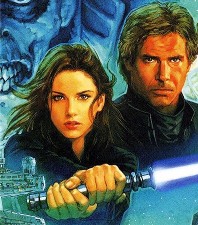 The comics and books are the best source of fierce, strong female characters where female fans can get the taste of being a Jedi, Emperor’s Hand, or a bounty hunter who make a difference in the epic ongoing battle between the light and dark side. One of the great side characters featured in the books was Barriss Offee. Many people were wary of Barriss being exposed as the traitor in The Clone Wars finale specifically because of her role in the Medstar duology. I’m not sure the television show actually negates those books as long as the finale takes place later in the war, nor conflicts with her characterization in them, where she struggled with the dark side. If the books had continued selling at the pace of Heir To The Empire, where fan-favorite Mara Jade was introduced to the galaxy far far away, the EU might have garnered consumer sway like book series such as Game of Thrones, Harry Potter, or The Hunger Games. But they haven’t, and Pablo Hidalgo, author of the Essential Reader’s Companion and longtime Lucasfilm employee, sometimes reminds Expanded Universe fans that the books and comics audience is a drop in the bucket compared to the movie or the television show fanbase. Still, outside of the main cast, the books and comics have produced the fullest representation of female characters.
The comics and books are the best source of fierce, strong female characters where female fans can get the taste of being a Jedi, Emperor’s Hand, or a bounty hunter who make a difference in the epic ongoing battle between the light and dark side. One of the great side characters featured in the books was Barriss Offee. Many people were wary of Barriss being exposed as the traitor in The Clone Wars finale specifically because of her role in the Medstar duology. I’m not sure the television show actually negates those books as long as the finale takes place later in the war, nor conflicts with her characterization in them, where she struggled with the dark side. If the books had continued selling at the pace of Heir To The Empire, where fan-favorite Mara Jade was introduced to the galaxy far far away, the EU might have garnered consumer sway like book series such as Game of Thrones, Harry Potter, or The Hunger Games. But they haven’t, and Pablo Hidalgo, author of the Essential Reader’s Companion and longtime Lucasfilm employee, sometimes reminds Expanded Universe fans that the books and comics audience is a drop in the bucket compared to the movie or the television show fanbase. Still, outside of the main cast, the books and comics have produced the fullest representation of female characters.
So it’s not the paths written in the story for Barriss, or Ahsoka or Asajj, that leave me conflicted about The Clone Wars’ finale. Ahsoka apparently escapes the impending massacre of Order 66. Asajj avoided both an enraged Anakin Skywalker and Republic prison. Both live to fight another day, and their further adventures are left, for now, to fans’ imaginations. 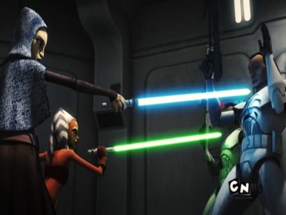 For Barriss, I’m not so troubled either. If women want to have equal representation in franchises, some of the good characters are going to fail or the suspense is lost. Some fans maintained there wasn’t enough groundwork for her fall, but we were seeing the story through Ahsoka’s eyes, so her best friend’s betrayal naturally would be shocking. Could we have used more of the Ahsoka and Barriss friendship onscreen prior to this arc? Absolutely. There still isn’t enough of that anywhere in storytelling.
For Barriss, I’m not so troubled either. If women want to have equal representation in franchises, some of the good characters are going to fail or the suspense is lost. Some fans maintained there wasn’t enough groundwork for her fall, but we were seeing the story through Ahsoka’s eyes, so her best friend’s betrayal naturally would be shocking. Could we have used more of the Ahsoka and Barriss friendship onscreen prior to this arc? Absolutely. There still isn’t enough of that anywhere in storytelling.
Which leads to the reason I’m disappointed that there won’t be any more The Clone Wars on television leading up to the release of Episode VII: for the first time ever, women were prominent in Star Wars stories that showed them struggling side by side and the perception of women in relation to the franchise had finally started to shift toward the positive. Not only that, fangirls have been building a community. Female fans in Star Wars had a Jedi star in Ahsoka Tano and a voice in her actress Ashley Eckstein. Better still, the fanboys could actually root for a female protagonist too, not because the character was sexy in her tube top, but because Ahsoka was unequivocally one of the best-crafted characters in the Star Wars universe.
None of those things seemed possible at the beginning of The Clone Wars.
From 2005 to Now
Do you remember what you were doing eight years ago? Sometimes it feels almost like an eternity ago. Revenge of the Sith had ushered in the end of the Prequel Trilogy. The movies had reinvigorated many older fans’ love for the franchise and had brought in countless new ones. The New Jedi Order series had concluded its run a little over a year earlier. The female fans who’d always wished for Leia swinging a lightsaber had seen the next best thing in Han’s and Leia’s daughter, Jaina Solo, kicking butt and taking names, and some of those adventures were alongside her equally badass aunt Mara Jade, undoubtedly the first lady of Star Wars Force-wielding female characters. The Dark Nest trilogy was kicking off, and though it proved unpopular for many reasons, none of them had to do with Leia finally earning her Jedi Knighthood well after her own children did. Eight years ago a new online fandom was burgeoning, too, with fans discussing the movies, books and comics, and anything else Star Wars. Some of those fans even imagined their own Star Wars storytelling and shared it with others.
In 2005, I was thoroughly involved in the online fan community, and I’d started to learn the harsh truth that entrenched fandom wasn’t always interested in welcoming others. This wasn’t just a fanboy mentality; it existed in the female-dominated fan fiction forums too. Behind screennames, people chose sides. Fandom existed in absolutes. Without a doubt, though, female fans were excluded the most in this early online mentality of “if you’re not with me, you’re against me.” That was also the year Dave Filoni interviewed with George Lucas for a job at Lucasfilm.
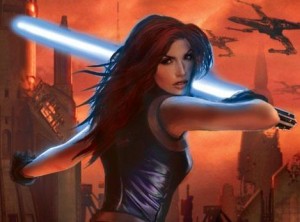 When The Clone Wars movie premiered in 2008, my passion for Star Wars hadn’t waned. The fandom was definitely changing, though. Mara Jade was dead in the EU’s ongoing timeline, and the heroines coming up behind her really hadn’t been given a chance to step into the spotlight. Negative attitudes toward female fans and female characters were still pervasive in the Star Wars community. While I continued engaging in discussions about Star Wars storytelling, I watched an enormous community of female fans drifting away from Star Wars to other franchises. As a fan who appreciated the continuous timeline of Star Wars, I was skeptical of The Clone Wars and the conundrum Ahsoka seemed to present as a Padawan to Anakin Skywalker. Still, I was a Star Wars optimist. I put on my hope and went along for the ride.
When The Clone Wars movie premiered in 2008, my passion for Star Wars hadn’t waned. The fandom was definitely changing, though. Mara Jade was dead in the EU’s ongoing timeline, and the heroines coming up behind her really hadn’t been given a chance to step into the spotlight. Negative attitudes toward female fans and female characters were still pervasive in the Star Wars community. While I continued engaging in discussions about Star Wars storytelling, I watched an enormous community of female fans drifting away from Star Wars to other franchises. As a fan who appreciated the continuous timeline of Star Wars, I was skeptical of The Clone Wars and the conundrum Ahsoka seemed to present as a Padawan to Anakin Skywalker. Still, I was a Star Wars optimist. I put on my hope and went along for the ride.
It took a while for The Clone Wars to find its footing. Stories jumped around the timeline, making it more difficult than it needed to be for the audience to connect. The veritable flops in storytelling, like the notorious poisoned soda investigation on Mandalore, didn’t help either. In Season Three, the series noticeably stepped up its game. George Lucas had opened up his little book of Star Wars secrets and started revealing aspects of his Force philosophy. The show had something else going for it, too – an incredibly enthusiastic cast headed by a supervising director who actually internalized why Star Wars works so universally.
Over the years I’ve read or listened to many interviews with various Star Wars storytellers, all of whom professed to be big fans of the franchise. I don’t doubt the fan credentials of any of them, but in my observations of the fandom it’s clear that many, including some of the creators in the franchise, only narrowly appreciate specific things – facts, stories, characters – about Star Wars without being able to see a broader perspective of how Star Wars works well across many levels. The Original Trilogy in particular, with the earnest hero, the iconic self-rescuing princess, and the cocky scoundrel, tapped into many different elements of fandom. When Dave Filoni talks to fans, it’s clear he empathizes with all types of fan perspectives. He is able to speak to their concerns, no matter where they are coming from.
“I think when you’re a creator, working on something like Star Wars or anything that has a fanbase, you have to accept the discussions, the arguments, even some of the hatred, comes from a place of passion and sometimes wanting to be a part of it. Most fans just want to be heard and I hope through some of the things they’ve seen on the show or experienced or when they get to talk to me or Joel or any of the cast, that they feel like they’re always heard and that we really appreciate the time they take and the interest they have and what they have to say.”
~ Dave Filoni, Star Wars Insider #140
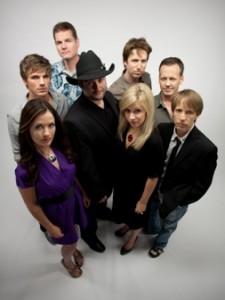 James Arnold Taylor, Dee Bradley Baker, Cat Taber, Matt Lanter, Tom Kane, and Sam Witwer are just a few of the names behind the characters of The Clone Wars. It’s the characters that make Star Wars special, and undoubtedly Dave Filoni understood this when he brought these actors into his fold. The game-changer for the success of the show, though, was Ashley Eckstein, who had to portray a character that no one seemed to want in their Star Wars at first. What might have been a seemingly impossible task she tackled with friendliness, enthusiasm, and always a smile. Dave Filoni has called her a great ambassador, and that’s an apt description. But I’d say that Ashley Eckstein went above and beyond ambassadorship, becoming the voice of the female fans, leading by example, and even mentoring fans in their endeavors.
James Arnold Taylor, Dee Bradley Baker, Cat Taber, Matt Lanter, Tom Kane, and Sam Witwer are just a few of the names behind the characters of The Clone Wars. It’s the characters that make Star Wars special, and undoubtedly Dave Filoni understood this when he brought these actors into his fold. The game-changer for the success of the show, though, was Ashley Eckstein, who had to portray a character that no one seemed to want in their Star Wars at first. What might have been a seemingly impossible task she tackled with friendliness, enthusiasm, and always a smile. Dave Filoni has called her a great ambassador, and that’s an apt description. But I’d say that Ashley Eckstein went above and beyond ambassadorship, becoming the voice of the female fans, leading by example, and even mentoring fans in their endeavors.
The Impact On Star Wars of Gender Imbalance in Storytellers
As an advocate for women in storytelling and a long-time Star Wars fan, I see Ashley’s activism on behalf of the female fans as a rare shining example of a woman helping other women discover that there is a place for them in the fandom.
While Lucasfilm has an admirable track record with hiring women in top executive positions, currently there isn’t an equal seat for women at the storytelling table looking across all the mediums. True, Lucasfilm licenses out some of this work, but they do approve the stories and their storytellers. Certainly J.J. Abrams, Michael Arndt, and Lawrence Kasdan bring plenty of credibility for creating positive female characters. But for female fans and for the franchise, should that really be good enough? Maria Lucas had a hand in the storytelling success of the original Star Wars, and Leigh Brackett wrote the first draft screenplay of The Empire Strikes Back, which earned the spot as fan-favorite in last year’s Star Wars Insider poll. The Prequel Trilogy, though, became about one person’s vision, and it’s not as universally praised as the Original Trilogy. Rumors of possible standalone movies have pretty much been male-centric stories – Yoda, Han, Boba. That says something about who’s positioned to get those stories produced.
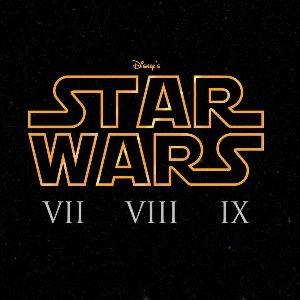 For all the girls and women who declare that Star Wars inspired them to reach for greatness, and for all the fan fiction, fan art, and cosplay Star Wars generated in the Prequel Trilogy and New Jedi Order years, the seats at the storytelling table are still dominated by men. While it’s encouraging that Star Wars hires men like Abrams, Filoni, and Brian Wood who can talk about portraying great female characters as intuitive, there are also plenty of female creators who can do the same thing. It’s fair to wonder when Star Wars will hire from outside, or produce from within, a great female storyteller like Kathryn Bigelow, Gail Simone, or Jane Espenson to create for the most influential pop culture franchise? Maybe it’s equally important to wonder why women of that caliber haven’t jumped at the chance? It’s crucial for women and girls to see that becoming a storyteller – a director, a screenwriter, a comics writer, a novelist – isn’t just something men can do.
For all the girls and women who declare that Star Wars inspired them to reach for greatness, and for all the fan fiction, fan art, and cosplay Star Wars generated in the Prequel Trilogy and New Jedi Order years, the seats at the storytelling table are still dominated by men. While it’s encouraging that Star Wars hires men like Abrams, Filoni, and Brian Wood who can talk about portraying great female characters as intuitive, there are also plenty of female creators who can do the same thing. It’s fair to wonder when Star Wars will hire from outside, or produce from within, a great female storyteller like Kathryn Bigelow, Gail Simone, or Jane Espenson to create for the most influential pop culture franchise? Maybe it’s equally important to wonder why women of that caliber haven’t jumped at the chance? It’s crucial for women and girls to see that becoming a storyteller – a director, a screenwriter, a comics writer, a novelist – isn’t just something men can do.
When the cancellation of The Clone Wars was announced, I couldn’t help but think about this imbalance at the storytelling table, and all the women active in the fandom eight years ago who left Star Wars for other franchises because they didn’t feel Star Wars and its fandom wanted to include their hopes and dreams. Luke Skywalker’s hero’s journey, brought to completion, is a powerful motivator and inspiration; there is almost an unending string of male creators who say that Luke’s journey inspired them to become storytellers. Women have been used to experiencing these kinds of stories through the eyes of male characters. Like the blockbuster success of Katniss Everdeen, Ahsoka proved that men can experience the start of such a journey through the eyes of female character. The number of voices, both male and female, now actively hoping for a female protagonist in the Sequel Trilogy adds weight to this shift.
But I worry about what will happen to the newest generation of female fans, the ones who got their introduction to Star Wars inspiration from the animated series, with the end of The Clone Wars. Has introducing them to a fantastic character whose arc ends bittersweet and indefinite left them discouraged? I watched many young women back away from the franchise when Mara was killed off and Jaina’s arc stalled. These were young women cutting their teeth on storytelling by creating fan art or fan fiction, just like Abrams tells of creating his home movie homages to his idols like Spielberg. But Star Wars disappointed them and they went elsewhere, and found new franchises to inspire them. Is that going to happen again? Did we almost reach the plateau where women would be on equal footing to have a chance to spin amazing Star Wars tales, only to run into a headwind called Two Years Until the Sequel?
Creating the Balance
On Twitter I expressed my apprehensiveness about when we’ll see a balance in future Star Wars bracket match-ups. JawaJames was more optimistic, hoping we’ll see a balance sooner than five years from now. Episode VII will be in 2015, possibly 2016. Even then, the characters it establishes will only be on par with Luke in A New Hope or Anakin Skywalker in The Phantom Menace – wizard, maybe, but not quite bombad like Luke in Return of the Jedi or Obi-Wan in Revenge of the Sith. It’s my opinion JawaJames’ hope of a balanced bracket faster than five years’ time only occurs if Disney|Lucasfilm proactively take steps to make that happen.
I genuinely believe Lucasfilm wants to embrace the female Star Wars fans. At Star Wars Weekends last year, I noted that scripts went out of their way to mention female Jedi and the word “fangirl” alongside its counterpart “fanboy.” Disney undoubtedly recognizes the power of the female consumer. The question in light of the cancellation of The Clone Wars, then, is how does Disney|Lucasfilm combat the wind they might have taken out of their sails? Or should I say, sales? How many girls who are too young understand that Ahsoka’s fate in the series finale was the best-case scenario have lost confidence in Star Wars as a source for fun and inspiration? How do they account for the loss of intangible momentum toward bringing the storyteller gender balance into better equilibrium?
A couple of years from now, the Sequel Trilogy movies will no doubt center on three main characters. I think it’s a fair bet that if it’s one female character and two male characters, the female character won’t be a politician in the vein of Leia and Padmé, but rather a Jedi. Perhaps they’ll be bold, and go with two female characters and one male in the trio. Neither one, though, will fix the bracket challenge perception, which boils down to balance in the ancillary characters, too.
The best argument for taking existing female Expanded Universe characters and including them in the Sequel Trilogy is precisely that bracket challenge dynamic. Even if she’s not romantically tied to Luke Skywalker, Mara Jade brings with her an incredible amount of credibility. She’s already won fan polls and been made into action figures and collectibles; even outside the Star Wars fandom she is recognized as a great female science fiction character. Minor characters like Winter, Iella, and Tyria bring reputations as solid strong female characters with an existing fanbase to speak up for them. While I understand painful change – even the loss of The Clone Wars – is inevitable to move forward, I don’t think Star Wars can afford to not select some of their existing cast as part of their new direction. Nor do I believe they can afford the ill-will that undoubtedly would ensue if Mara Jade is erased. Too many fans, especially female fans, are invested in these characters to risk tossing them all aside.
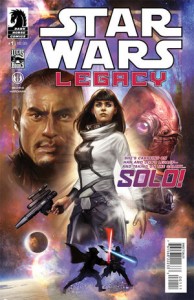 In the meantime, fortunately, the Expanded Universe is showing signs of an upswing. The Star Wars #1 comic by Brian Wood is in its fourth printing. Wood is taking glimpses of Princess Leia’s character that were a given even in A New Hope – she was always depicted as a warrior – and building them to their full potential. Wood started “selling” his story half a year before the first page of Star Wars #1 ever hit the comic bookstore shelves, making sure all the fans who’d wanted to read about Leia as an action heroine knew he was writing about Leia in an X-wing. In addition, Wood had existing credibility within the comics industry for creating diverse, complicated, and relatable female characters. The original Legacy comics written by John Ostrander and Jan Duursema were packed full with great female characters, driving much of its popularity; now a new Legacy era story features a female heir to the Skywalker and Solo legacy. The series’ writers, Corrina Bechko and Gabriel Hardman, have mirrored Wood’s preemptive media blitz and worked hard to bring awareness of the tale through interviews, appearances, and social media.
In the meantime, fortunately, the Expanded Universe is showing signs of an upswing. The Star Wars #1 comic by Brian Wood is in its fourth printing. Wood is taking glimpses of Princess Leia’s character that were a given even in A New Hope – she was always depicted as a warrior – and building them to their full potential. Wood started “selling” his story half a year before the first page of Star Wars #1 ever hit the comic bookstore shelves, making sure all the fans who’d wanted to read about Leia as an action heroine knew he was writing about Leia in an X-wing. In addition, Wood had existing credibility within the comics industry for creating diverse, complicated, and relatable female characters. The original Legacy comics written by John Ostrander and Jan Duursema were packed full with great female characters, driving much of its popularity; now a new Legacy era story features a female heir to the Skywalker and Solo legacy. The series’ writers, Corrina Bechko and Gabriel Hardman, have mirrored Wood’s preemptive media blitz and worked hard to bring awareness of the tale through interviews, appearances, and social media.
Fate of the Jedi: Apocalypse proved the books can make an impression when they allow the female characters to shine. In April, Lanoree Brock debuts as the female protagonist in Dawn of the Jedi: Into the Void by Tim Lebbon, and later in the year we’ll see Martha Wells’ untitled Leia novel set in Original Trilogy era. So from two years ago, when the roster of books was literally all focused on male characters, fans have seen a remarkable shift. These books also undoubtedly will benefit from the same aggressive approach taken by Dark Horse’s writers in marketing their stories. Lebbon and Wells are new to the existing EU fanbase, but Wood has proven that hurdle isn’t insurmountable with active engagement. With the Disney acquisition and the Sequel Trilogy still fresh on the public’s mind, there is no reason not to capitalize on the raised profile of Star Wars. Creating good stories is important, but it’s equally critical to make sure potential readers know about them, that they believe in the credentials of the storytellers, and that they understand those creators are excited to be part of the fandom community, the same way the talented team on The Clone Wars has done.
Hopefully, Disney and Lucasfilm recognize what Dave Filoni, Ashley Eckstein, and The Clone Wars brought to the franchise. Dave Filoni bridged a gap George Lucas found impossible to reach across as a storyteller – Filoni created a two-way conversation with the fandom. Star Wars and the fandom are better for the dialogue The Clone Wars supervising director opened. It’s imperative that Star Wars find a way to keep the conversation going. Star Wars Weekends will give James Arnold Taylor and Ashley Eckstein a platform over the summer, but it’s beyond June when the potential for enthusiasm to wane is the greatest. I’ll keep my fingers crossed that surprising and exciting news about the Sequel Trilogy is on the horizon. Regardless, the fandom and the franchise would do well to find a way to keep their ambassadors front and center, to keep the momentum.
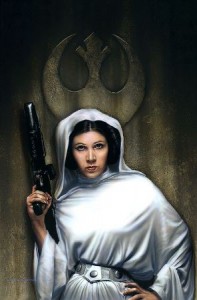 Now more than ever, the female fans need that hand up to push against the headwind of the past couple of weeks. Quite often, I’m asked how I got the chance to write for Star Wars Insider, blog at Suvudu, or provide my input on the Essential Reader’s Companion. I created those opportunities by channeling Leia, Padmé, Jaina, Mara, and Ahsoka – all of whom spoke up when they felt the situation called for it. They’re all examples of what Facebook’s Sheryl Sandberg calls women who “lean in” to achieve their goals. I leaned in and inserted my opinion in the fandom discussion – I created a platform that has helped change the perception of female fans within the franchise. After my most recent appearance on The Cantina Cast, the hosts discussed my interview in the follow-up and realized they had certain assumptions about my preferences or points of view because I was a woman. Those assumptions didn’t always bear out. This is exactly why I believe balance in storytellers is so important. For women, leaning in isn’t always a comfortable place to go, and it’s important that fact is considered and understood by the decision-makers. As Anita Sarkeesian points out in her TedxWomen talk, leaning into the fandom establishment can be more of a struggle than any individual deserves. While backlash from some corners of the fandom can be painful, female fans who have leaned in have found that there is also an amazing base of support.
Now more than ever, the female fans need that hand up to push against the headwind of the past couple of weeks. Quite often, I’m asked how I got the chance to write for Star Wars Insider, blog at Suvudu, or provide my input on the Essential Reader’s Companion. I created those opportunities by channeling Leia, Padmé, Jaina, Mara, and Ahsoka – all of whom spoke up when they felt the situation called for it. They’re all examples of what Facebook’s Sheryl Sandberg calls women who “lean in” to achieve their goals. I leaned in and inserted my opinion in the fandom discussion – I created a platform that has helped change the perception of female fans within the franchise. After my most recent appearance on The Cantina Cast, the hosts discussed my interview in the follow-up and realized they had certain assumptions about my preferences or points of view because I was a woman. Those assumptions didn’t always bear out. This is exactly why I believe balance in storytellers is so important. For women, leaning in isn’t always a comfortable place to go, and it’s important that fact is considered and understood by the decision-makers. As Anita Sarkeesian points out in her TedxWomen talk, leaning into the fandom establishment can be more of a struggle than any individual deserves. While backlash from some corners of the fandom can be painful, female fans who have leaned in have found that there is also an amazing base of support.
Facebook’s Sandberg also emphasizes the importance of mentoring as a key to success. As a fan who has had a chance to do things most fans dream of, I can attest that almost all of those opportunities came from someone providing me mentorship, some in big ways and from others they were small gestures.
Mentoring can happen from friends, acquaintances, or just someone who wants to pay it forward to a stranger. Katie Lucas’ opportunity in The Clone Wars came from knowing the right person. It’s impossible to say whether, if she hadn’t written for the show, another woman would have been given that seat at the table. The reality is that earning a spot on a television show writing team because the right person is aware of your interest is essentially how the business works; it’s always about who you know. Katie Lucas’ screenwriting proved that she deserved that spot, and undoubtedly she brought a different style to the show, one seen through the eyes of a young woman influenced by Joss Whedon’s Buffy the Vampire Slayer as much as her father’s space opera. I’m not a proponent of setting gender targets for hiring, but I do think that it’s fair to ask people in charge to reflect on why they’re hiring a script writer, director, novelist, artist, or comic writer. Is it because that’s who they already know, who they’re comfortable with? Did they give serious consideration to allowing someone new a chance, and to broadening the life experiences of their storytelling base? Brenda Chapman, co-director of Brave, who worked at Lucasfilm for a while after her time at Pixar, wrote about how she came to be hired into Disney’s storytelling unit, because they acknowledged there wasn’t enough of a balance. Both Katie Lucas and Brenda Chapman prove that when given a chance women can do great things with their stories and for their franchises. The simple fact is not everyone is positioned that well or gets that fortunate. But that makes it all the more important for the women who do reach the highest echelons to reach out and mentor the ones following behind them.
So today, as Leia and Padmé face off in the This Is Madness bracket challenge, I hope female fans are inspired by those characters’ determination, that Disney|Lucasfilm wants as much as the fandom does to see the brackets in future years reflective of the world’s gender balance and its fanbase, and that the spirit of family, support, and acceptance embodied by The Clone Wars team is never forgotten in our collective fandom memory.
- Hyperspace Theories: SKELETON CREW Ahoy! - December 29, 2024
- Hyperspace Theories: WICKED Part I Rises to the Moment - December 6, 2024
- Columbia’s Vader™ Collection Launches Dec 5 - November 27, 2024

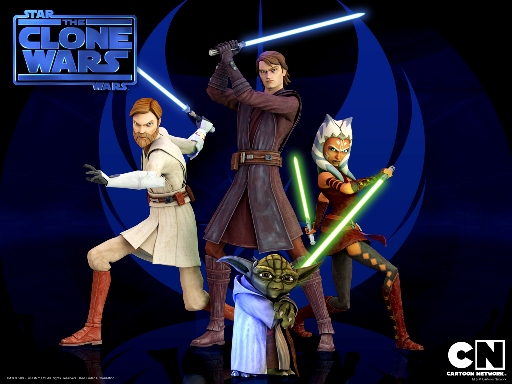







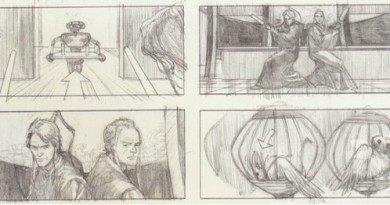
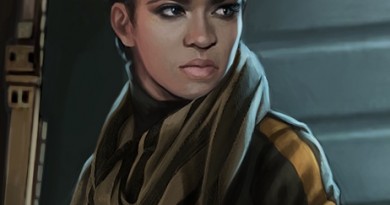
This has really made me think. As much as I’m not shedding tears over the loss of The Clone Wars it really was doing much better than any other part of Star Wars with female characters in the latest season, and I hope Disney’s desire to have all eyes on their new movies doesn’t curtail that success. The SWEU has always survived with a lot going on. But as you know I agree with you on how much sense Disney’s actions make from a corporate standpoint, and how their relative coldness and the fan sadness aren’t really enemies or mutually exclusive. This was a very well-written piece, as evidenced by my struggles to find the right words to respond! I hope the Clone Wars cast, who have been such good ambassadors, will find a place in the new world of Star Wars.
Thanks, Megan. I look forward to having many more discussions with you about Star Wars stories.
~